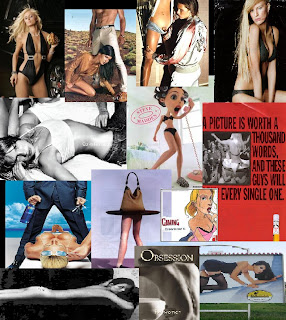
This collage shows advertisements that degrade and lower women as individuals and depict them more as property, and under subjection to men. It shows how the media, along with pop culture, uses these images to depict what every “real” woman is suppose to look like. Have you ever seen normal woman in your area that look like this, and are being questioned if they’re having health issues and being held on a lease by a man? These advertisers use models that look unhealthy and extremely skinny, as sexy selling products. They also use today’s computer technologies to “erase” the “flaws” of these models to make their advertisements seem more appealing and more attractive to men; when in fact, it’s only causing our young woman to strive to look like this (which is almost impossible to look anorexic and be healthy at the same time) despite making awfully unhealthy decisions.